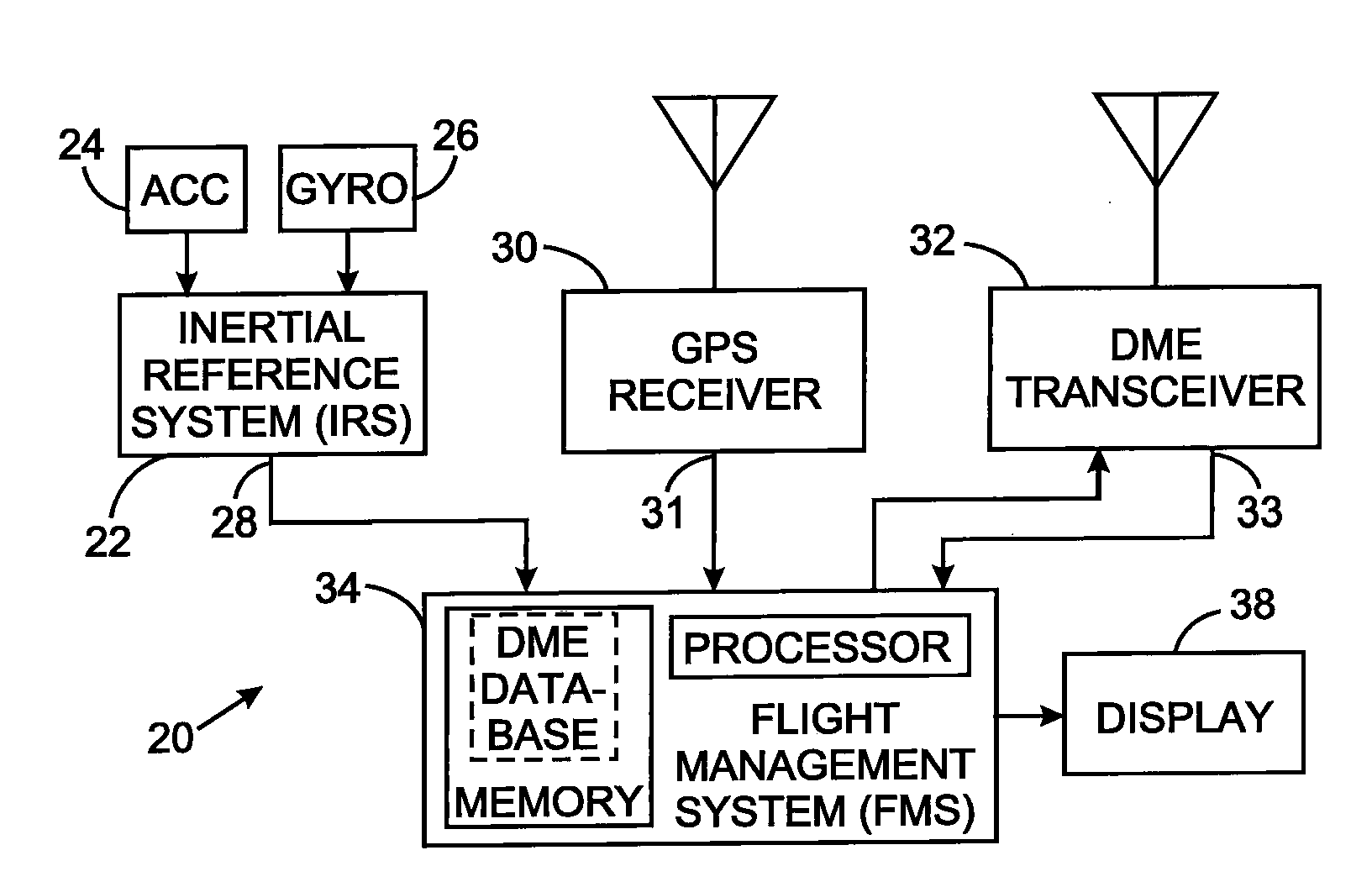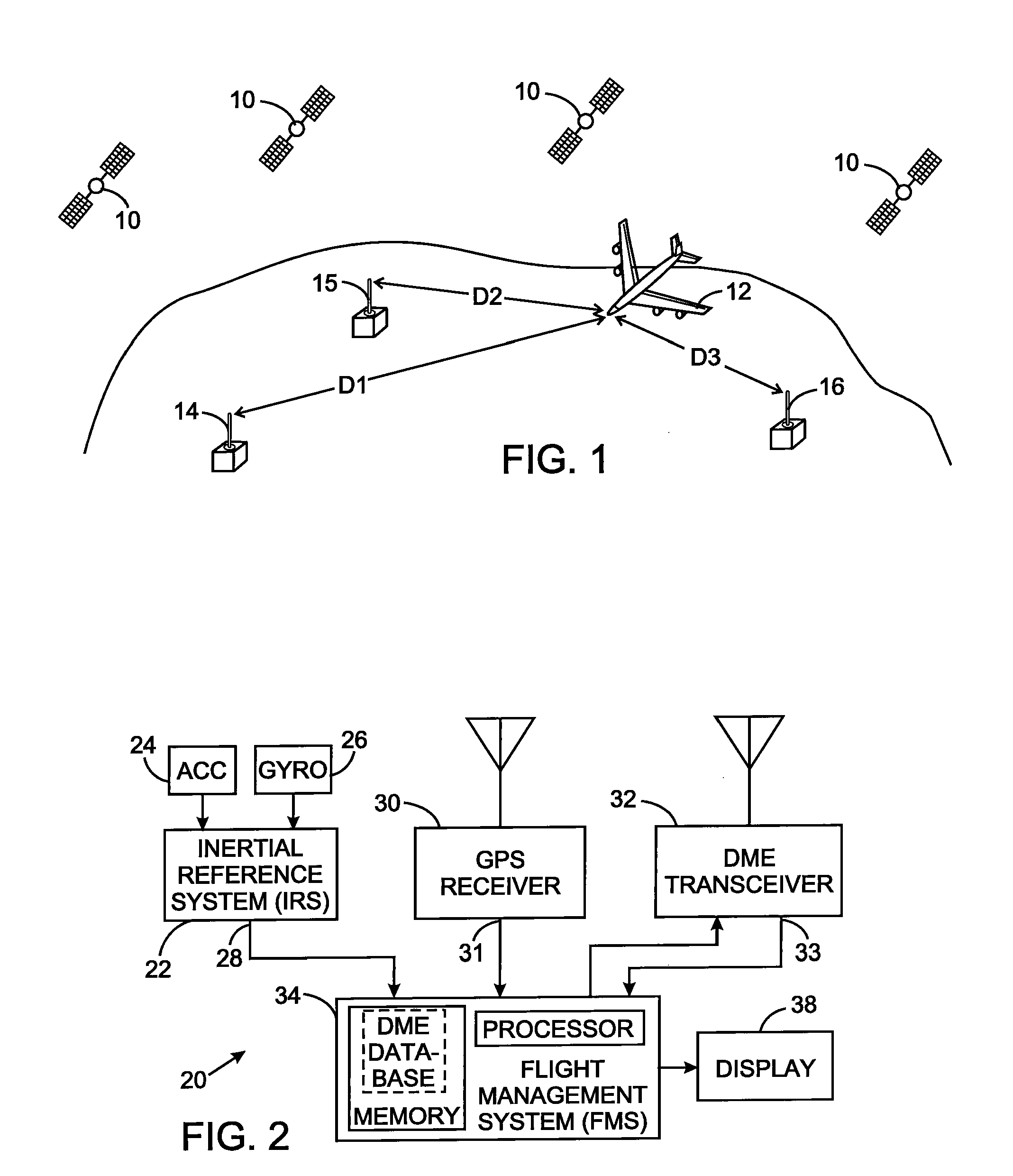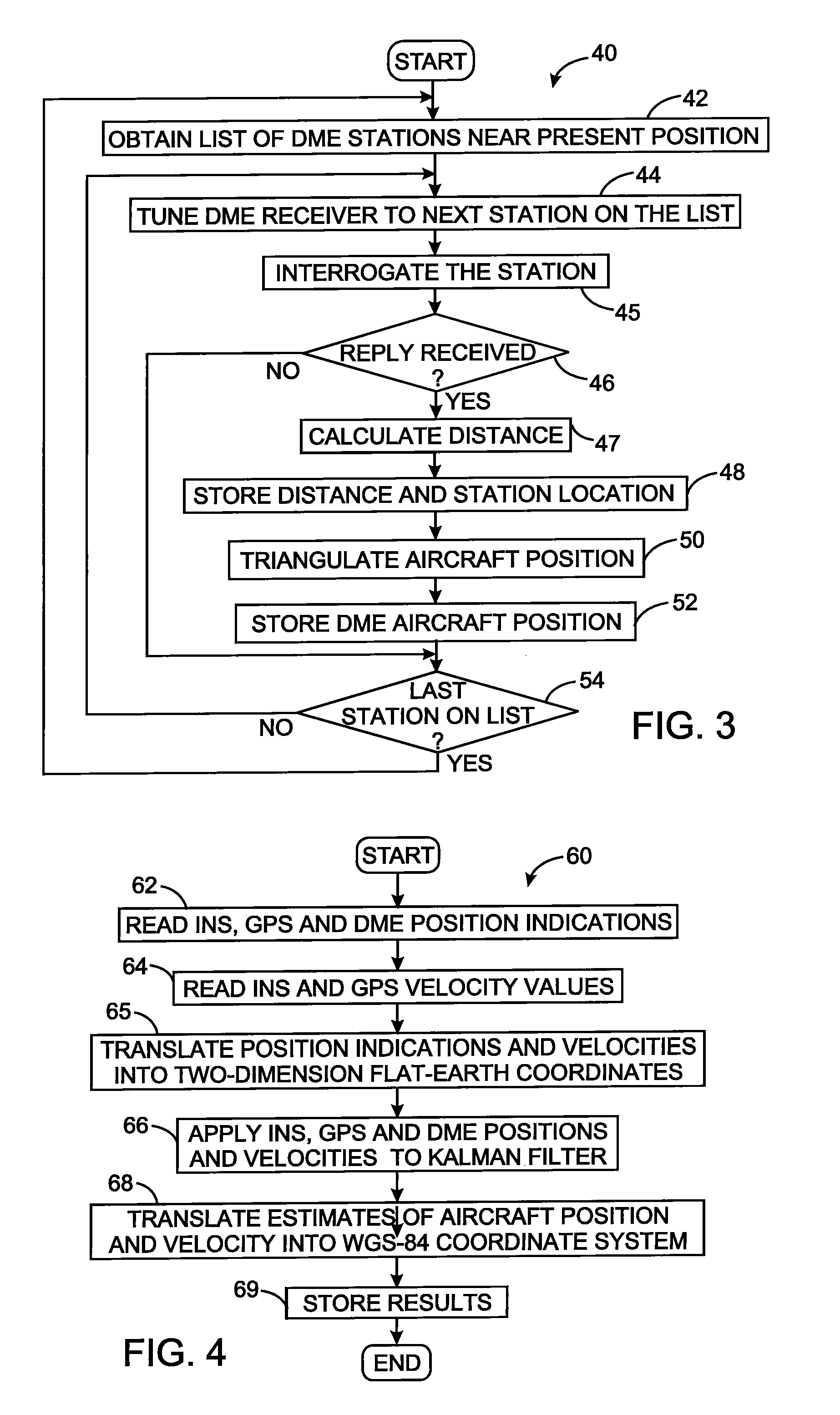Aircraft navigation using the global positioning system, inertial reference system, and distance measurements
a global positioning system and inertial reference technology, applied in the field of navigation utilizing the global positioning system, inertial reference system, distance measurement equipment, etc., can solve the problems of affecting the reception of gps signals, all inertial reference systems suffer from integration drift, and inertial reference system drift error no longed could not be dynamically corrected
- Summary
- Abstract
- Description
- Claims
- Application Information
AI Technical Summary
Problems solved by technology
Method used
Image
Examples
Embodiment Construction
[0021]Referring initially to FIG. 1, the conventional global positioning system (GPS) comprises a plurality of satellites 10, each broadcasting a unique microwave signal. Those GPS signals from the satellites 10 can be used to determine the position of a vehicle, such as the aircraft 12. The orbits of the GPS satellites 10 are arranged in multiple planes, in order to maximize the likelihood that the aircraft 12 simultaneously receives signals from at least four GPS satellites at any arbitrary point on or near the earth. The orbits of the GPS satellites 10 are determined with accuracy from fixed ground stations and are relayed back to the respective satellite.
[0022]In navigation applications of the GPS, the latitude, longitude, and altitude of any point close to the earth, such as that of the aircraft 12, can be calculated from the propagation times of the signals from four or more of the satellites 10 to the unknown location. A measured range, often called the “pseudorange”, between...
PUM
 Login to View More
Login to View More Abstract
Description
Claims
Application Information
 Login to View More
Login to View More - R&D
- Intellectual Property
- Life Sciences
- Materials
- Tech Scout
- Unparalleled Data Quality
- Higher Quality Content
- 60% Fewer Hallucinations
Browse by: Latest US Patents, China's latest patents, Technical Efficacy Thesaurus, Application Domain, Technology Topic, Popular Technical Reports.
© 2025 PatSnap. All rights reserved.Legal|Privacy policy|Modern Slavery Act Transparency Statement|Sitemap|About US| Contact US: help@patsnap.com



